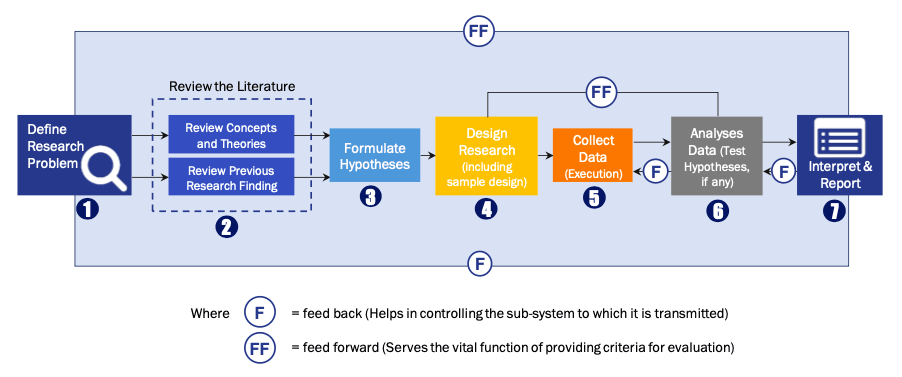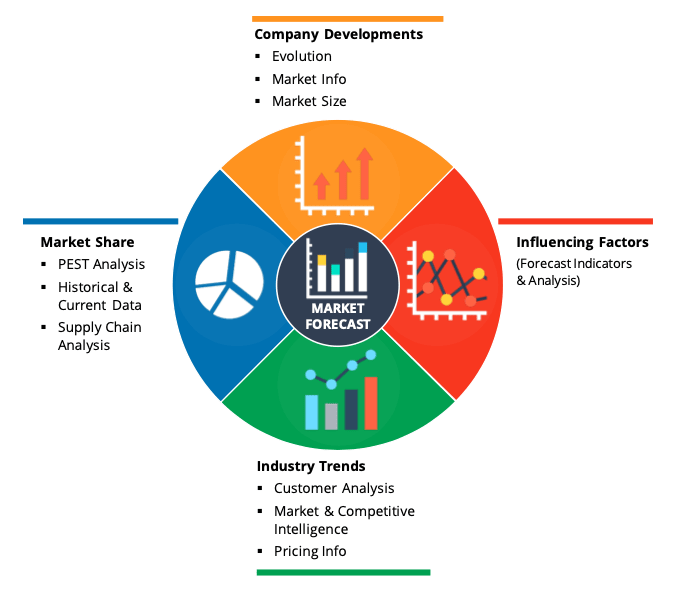Rocket Propulsion Market Overview
The market is primarily driven by factors like rising investments of major economies within the world in space centers and launching satellites, increasing efforts to cut back carbon footprints using alternate fuels, technological advancements aimed toward reducing the manufacturing costs, and increasing fuel efficiency. Major players within the industry are supported by the government bodies with high space-related investments, which enables them to spend more on their R&D, allowing them to innovate continuously and are available up with more efficient and advanced technologies.
However, the political insurgencies between nations and lack of measures for disposal of orbital debris are the factors which are restraining the growth of the global rocket propulsion systems market. The introductions of space tourism and mature technology of reusable rockets are expected to further boost the demand for rocket propulsion in subsequent times to come.
Covid-19 Impact on Rocket Propulsion Market:
As the COVID-19 pandemic continuing its effect around the world, many defence and aerospace companies are facing its impact during this time around the world. For instance, commercial aviation companies in the U.S., France, Germany, and Canada are facing disruption in the production process and reduced demand as workforces staying at home, passengers stop traveling, and delay in delivery of new aircraft. Analysts expecting a drop from a 3,000 to 4,000 aircrafts during the pandemic period. On the defence side, contractors operating in the sector are in a better position, hence the impact of the pandemic is likely low in the short to mid-term. However, low demand due to budget constrains affecting the production as in aircraft manufacturing.
Rocket Propulsion Market Segment Overview
Based on the type, the market is segmented as rocket motor and rocket engine. The rocket engine segment is estimated to register higher growth within the coming five years. the expansion of this segment is often attributed to the rising number of launch service providers across the world, drop-in pricing for launches, and therefore the increasing demand for reusable launch vehicles.
Rocket propulsion are often within the type of solid, liquid, or maybe hybrid. It may be used in commercial also as military aircraft. they are used in orbits and recently in space tourism programs.
Market Analysis, Insights and Forecast – By Type
· Rocket Motor
· Rocket Engine
Market Analysis, Insights and Forecast – By Propulsion
· Solid
· Liquid
· Hybrid
Market Analysis, Insights, and Forecast – By End-user
· Military & Government
· Commercial
Rocket Propulsion Market Regional Overview
Region-wise, in terms of regions, North America was expected to stay dominant within the reaction propulsion market in the forecast period. The region’s market is driven by the growing demand for space launch services for various payloads, like satellites, human spacecraft, missions to ISS, and testing probes, which is predicted to significantly contribute to the expansion of the market during this region. The region is investing considerably within the advancement of space tourism and exploration and space probe missions, which is further fuelling the expansion of the rocket propulsion market. On the opposite hand, the rocket propulsion market within the Asia-Pacific region is estimated to depict the highest growth within the coming five years, sustained by the rising investments within the space launch industry.
Rocket Propulsion Market, By Geography
· North America (US & Canada)
· Europe (UK, Germany, France, Italy, Spain, & Rest of Europe)
· Asia-Pacific (Japan, China, India, Australia, & South Korea, & Rest of Asia-Pacific)
· LAMEA (Brazil, Saudi Arabia, UAE & Rest of LAMEA)
Rocket Propulsion Market Competitor overview
Some key developments and strategies adopted by manufacturers in the Rocket Propulsion are highlighted below.
· In February 2021, China announced its plans to conduct 40 space launches in 2021, with the development of the country's first space platform as its top priority.
· In November 2020, ISRO launched 10 satellites into orbit on board the PSLV-C49 launch vehicle. This launch marks the second time the rocket flew during a new "DL" configuration with two solid, strap-on motors.
Rocket Propulsion Market, Key Players
· Antrix Corporation Limited
· Aerojet Rocketdyne
· Mitsubishi Heavy Industries
· NPO Energomash
· Orbital ATK
· Rocket Lab
· Safran S.A.
· Safran Exploration Technologies Corp.
· Virgin Galactic.
Rocket Propulsion Market Study Global Market Analysis, Insights and Forecast, 2020-2027
1. Introduction
- 1.1. Research Scope
- 1.2. Market Segmentation
- 1.3. Research Methodology
- 1.4. Definitions and Assumptions
2. Executive Summary
3. Market Dynamics
- 3.1. Market Drivers
- 3.2. Market Restraints
- 3.3. Market Opportunities
4. Key Insights
- 4.1. Key Emerging Trends – For Major Countries
- 4.2. Latest Technological Advancement
- 4.3. Regulatory Landscape
- 4.4. Industry SWOT Analysis
- 4.5. Porters Five Forces Analysis
5. Global Rocket Propulsion Market Analysis (USD Billion), Insights and Forecast, 2020-2027
- 5.1. Key Findings / Summary
- 5.2. Market Analysis, Insights and Forecast – By Type
- 5.2.1. Rocket Motor
- 5.2.2. Rocket Engine
- 5.3. Market Analysis, Insights and Forecast – By Propulsion
- 5.3.1. Solid
- 5.3.2. Liquid
- 5.3.3. Hybrid
- 5.4. Market Analysis, Insights and Forecast – By End-user
- 5.4.1. Military & Government
- 5.4.2. Commercial
- 5.5. Market Analysis, Insights and Forecast – By Region
- 5.5.1. North America
- 5.5.2. Europe
- 5.5.3. Asia Pacific
- 5.5.4. Latin America, Middle East, and Africa
6. North America Rocket Propulsion Market Analysis (USD Billion), Insights and Forecast, 2020-2027
- 6.1. Key Findings / Summary
- 6.2. Market Analysis, Insights and Forecast – By Type
- 6.2.1. Rocket Motor
- 6.2.2. Rocket Engine
- 6.3. Market Analysis, Insights and Forecast – By Propulsion
- 6.3.1. Solid
- 6.3.2. Liquid
- 6.3.3. Hybrid
- 6.4. Market Analysis, Insights and Forecast – By End-user
- 6.4.1. Military & Government
- 6.4.2. Commercial
- 6.5. Market Analysis, Insights and Forecast – By Country
7. Europe Rocket Propulsion Market Analysis (USD Billion), Insights and Forecast, 2020-2027
- 7.1. Key Findings / Summary
- 7.2. Market Analysis, Insights and Forecast – By Type
- 7.2.1. Rocket Motor
- 7.2.2. Rocket Engine
- 7.3. Market Analysis, Insights and Forecast – By Propulsion
- 7.3.1. Solid
- 7.3.2. Liquid
- 7.3.3. Hybrid
- 7.4. Market Analysis, Insights and Forecast – By End-user
- 7.4.1. Military & Government
- 7.4.2. Commercial
- 7.5. Market Analysis, Insights and Forecast – By Country
- 7.5.1. UK
- 7.5.2. Germany
- 7.5.3. France
- 7.5.4. Italy
- 7.5.5. Spain
- 7.5.6. Russia
- 7.5.7. Rest of Europe
8. Asia Pacific Rocket Propulsion Market Analysis (USD Billion), Insights and Forecast, 2020-2027
- 8.1. Key Findings / Summary
- 8.2. Market Analysis, Insights and Forecast – By Type
- 8.2.1. Rocket Motor
- 8.2.2. Rocket Engine
- 8.3. Market Analysis, Insights and Forecast – By Propulsion
- 8.3.1. Solid
- 8.3.2. Liquid
- 8.3.3. Hybrid
- 8.4. Market Analysis, Insights and Forecast – By End-user
- 8.4.1. Military & Government
- 8.4.2. Commercial
- 8.5. Market Analysis, Insights and Forecast – By Country
- 8.5.1. China
- 8.5.2. India
- 8.5.3. Japan
- 8.5.4. Australia
- 8.5.5. South East Asia
- 8.5.6. Rest of Asia Pacific
9. Latin America, Middle East, and Africa Rocket Propulsion Market Analysis (USD Billion), Insights and Forecast, 2020-2027
- 9.1. Key Findings / Summary
- 9.2. Market Analysis, Insights and Forecast – By Type
- 9.2.1. Rocket Motor
- 9.2.2. Rocket Engine
- 9.3. Market Analysis, Insights and Forecast – By Propulsion
- 9.3.1. Solid
- 9.3.2. Liquid
- 9.3.3. Hybrid
- 9.4. Market Analysis, Insights and Forecast – By End-user
- 9.4.1. Military & Government
- 9.4.2. Commercial
- 9.5. Market Analysis, Insights and Forecast – By Country
- 9.5.1. Brazil
- 9.5.2. Saudi Arabia
- 9.5.3. UAE
- 9.5.4. Rest of LAMEA
10. Competitive Analysis
- 10.1. Company Market Share Analysis, 2018
- 10.2. Key Industry Developments
- 10.3. Company Profile
- 10.4. Antrix Corporation Limited
- 10.4.1. Business Overview
- 10.4.2. Segment 1 & Service Offering
- 10.4.3. Overall Revenue
- 10.4.4. Geographic Presence
- 10.4.5. Recent Development
*Similar details will be provided for the following companies
- 10.5. Aerojet Rocketdyne
- 10.6. Mitsubishi Heavy Industries
- 10.7. NPO Energomash
- 10.8. Orbital ATK
- 10.9. Rocket Lab
- 10.10. Safran S.A.
- 10.11. Safran Exploration Technologies Corp.
Research Process
Data Library Research are conducted by industry experts who offer insight on
industry structure, market segmentations technology assessment and competitive landscape (CL), and penetration, as well as on emerging trends. Their analysis is based on primary interviews (~ 80%) and secondary research (~ 20%) as well as years of professional expertise in their respective industries. Adding to this, by analysing historical trends and current market positions, our analysts predict where the market will be headed for the next five years. Furthermore, the varying trends of segment & categories geographically presented are also studied and the estimated based on the primary & secondary research.
In this particular report from the supply side Data Library Research has conducted primary surveys (interviews) with the key level executives (VP, CEO’s, Marketing Director, Business Development Manager
and SOFT) of the companies that active & prominent as well as the midsized organization
FIGURE 1: DLR RESEARH PROCESS

Primary Research
Extensive primary research was conducted to gain a deeper insight of the market and industry performance. The analysis is based on both primary and secondary research as well as years of professional expertise in the respective industries.
In addition to analysing current and historical trends, our analysts predict where the market is headed over the next five years.
It varies by segment for these categories geographically presented in the list of market tables. Speaking about this particular report we have conducted primary surveys (interviews) with the key level executives (VP, CEO’s, Marketing Director, Business Development Manager and many more) of the major players active in the market.
Secondary Research
Secondary research was mainly used to collect and identify information useful for the extensive, technical, market-oriented, and Friend’s study of the Global Extra Neutral Alcohol. It was also used to obtain key information about major players, market classification and segmentation according to the industry trends, geographical markets, and developments related to the market and technology perspectives. For this study, analysts have gathered information from various credible sources, such as annual reports, sec filings, journals, white papers, SOFT presentations, and company web sites.
Market Size Estimation
Both, top-down and bottom-up approaches were used to estimate and validate the size of the Global market and to estimate the size of various other dependent submarkets in the overall Extra Neutral Alcohol. The key players in the market were identified through secondary research and their market contributions in the respective geographies were determined through primary and secondary research.
Forecast Model


